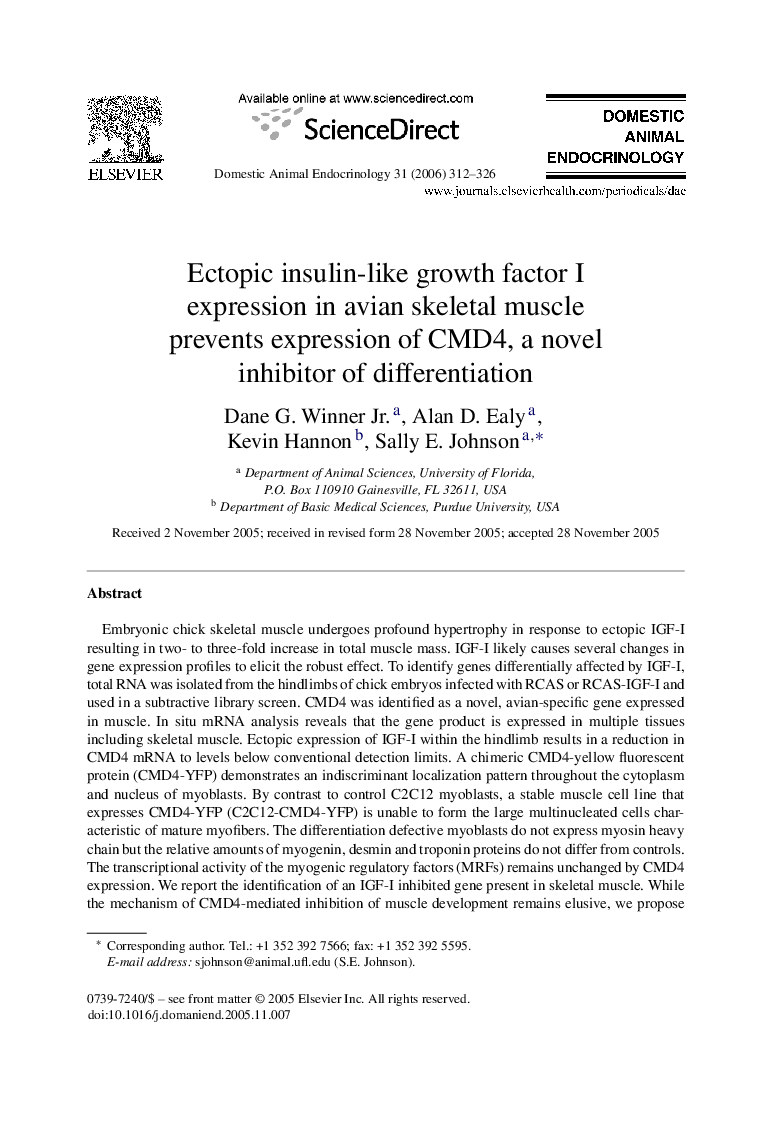| کد مقاله | کد نشریه | سال انتشار | مقاله انگلیسی | نسخه تمام متن |
|---|---|---|---|---|
| 2393959 | 1101364 | 2006 | 15 صفحه PDF | دانلود رایگان |

Embryonic chick skeletal muscle undergoes profound hypertrophy in response to ectopic IGF-I resulting in two- to three-fold increase in total muscle mass. IGF-I likely causes several changes in gene expression profiles to elicit the robust effect. To identify genes differentially affected by IGF-I, total RNA was isolated from the hindlimbs of chick embryos infected with RCAS or RCAS-IGF-I and used in a subtractive library screen. CMD4 was identified as a novel, avian-specific gene expressed in muscle. In situ mRNA analysis reveals that the gene product is expressed in multiple tissues including skeletal muscle. Ectopic expression of IGF-I within the hindlimb results in a reduction in CMD4 mRNA to levels below conventional detection limits. A chimeric CMD4-yellow fluorescent protein (CMD4-YFP) demonstrates an indiscriminant localization pattern throughout the cytoplasm and nucleus of myoblasts. By contrast to control C2C12 myoblasts, a stable muscle cell line that expresses CMD4-YFP (C2C12-CMD4-YFP) is unable to form the large multinucleated cells characteristic of mature myofibers. The differentiation defective myoblasts do not express myosin heavy chain but the relative amounts of myogenin, desmin and troponin proteins do not differ from controls. The transcriptional activity of the myogenic regulatory factors (MRFs) remains unchanged by CMD4 expression. We report the identification of an IGF-I inhibited gene present in skeletal muscle. While the mechanism of CMD4-mediated inhibition of muscle development remains elusive, we propose that loss of CMD4 gene expression may be required for optimal muscle hypertrophy in the chick embryo.
Journal: Domestic Animal Endocrinology - Volume 31, Issue 4, November 2006, Pages 312–326